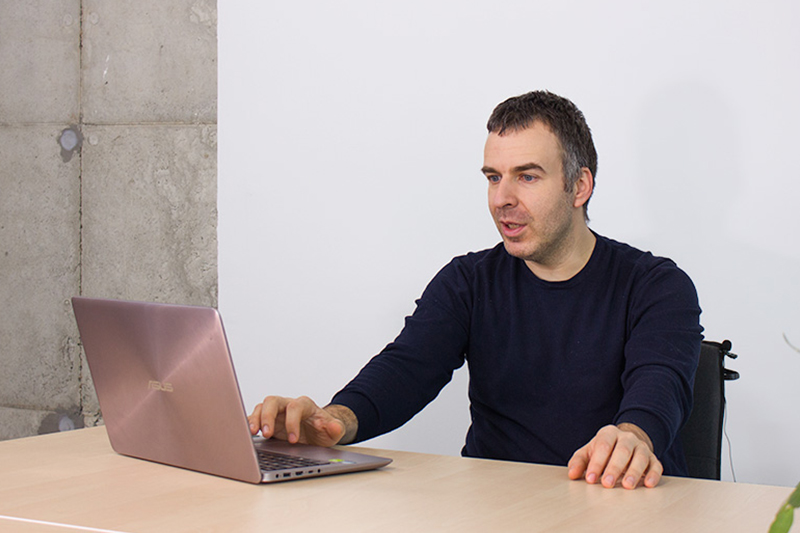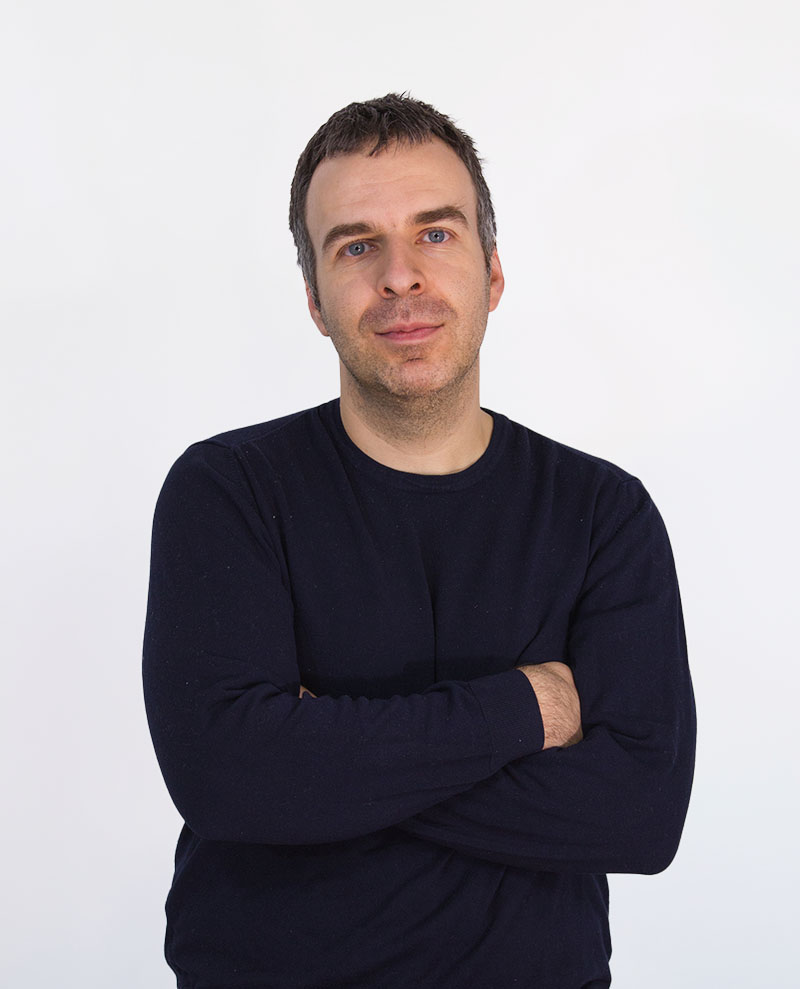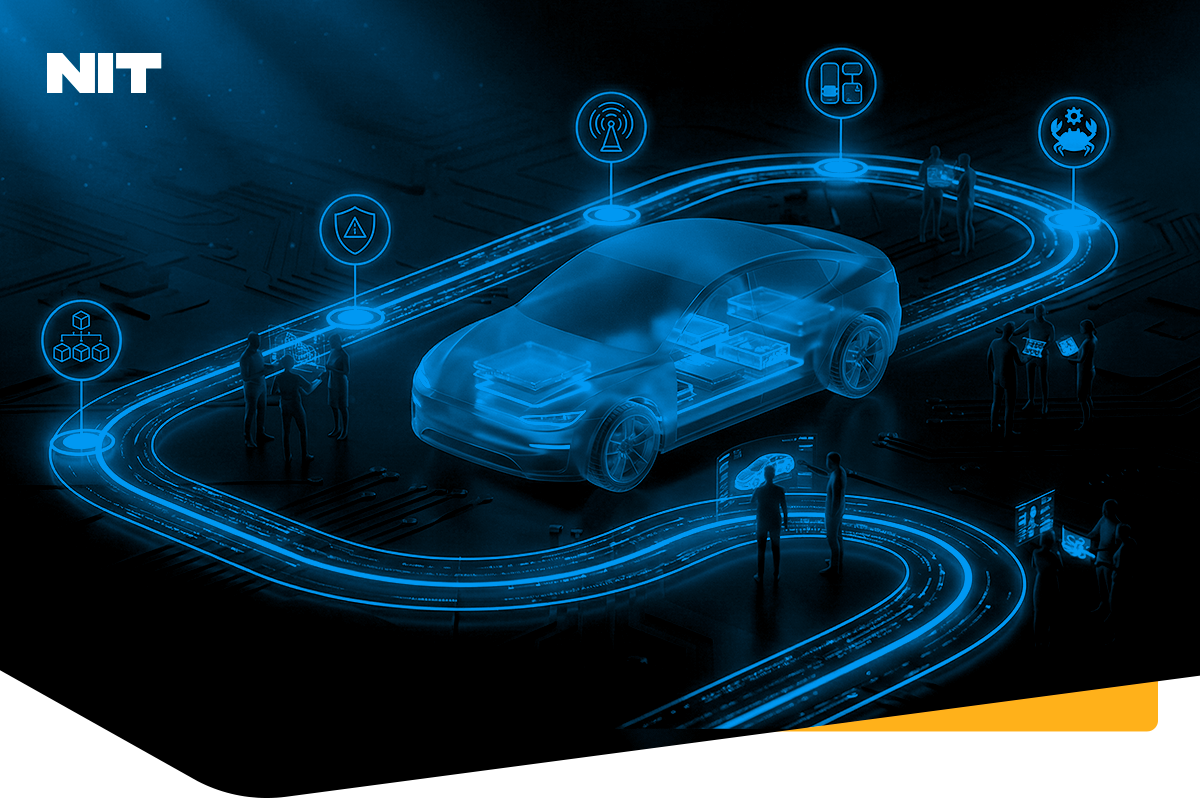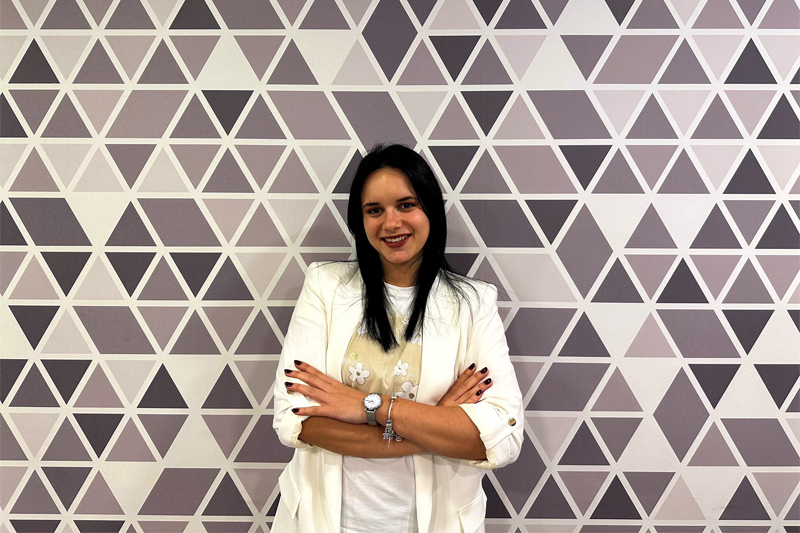
We are opening our extensive series of interviews with influential people in the information technology field with professor Milan Bjelica, the CEO of NIT Institut LLC.
Milan Bjelica was born in 1985 in Zrenjanin. He moved to Novi Sad to pursue a career in electrical and computer engineering. He got his PhD. in 2013, and that same year he was awarded the “Special Merit Award” at the consumer electronics conference in Las Vegas.
The Faculty of Technical Sciences named him the best young researcher in 2014. Milan Bjelica is the author of 24 patents and over a hundred scientific papers. During his career, he consulted companies like ZF Germany, Qualcomm Automotive USA, TTTech Austria, and Daimler Germany in the fields of system and functional safety, automotive engineering, and consumer electronics.
His growing interest in the automotive industry led him to get an Academic Safety Engineer degree from VISSE (Vienna Institute for Safety and Systems Engineering), Austria. Dr Bjelica also works as head of innovation at RT-RK, specifically in the domain of automotive engineering and computer systems. Apart from rich industry experience, he is an associate professor at UNS FTS where he teaches computer engineering.
We aimed to talk with him about inspiring moments in his career, his connection with Philips, the Empire State building and Alicia Keys. We also spoke about NIT academy, its professors, and plans for the future.
So if you have plans of enrolling in NIT academy, and you want to know our professors and our CEO a bit closer, read ahead.

Hello professor, and thank you for inserting us into your busy schedule. The first thing we would like to chat about is your work background. So, can you take us through your journey from enrolling Faculty of Technical Sciences in Novi Sad up until this moment?
At the moment, I have got close to 15 years of work experience in both industry and academia, and it all started with the Faculty of Technical Sciences in Novi Sad, where I was a student and where I ended up getting my PhD. My first job was in Micronas NIT, which provided software and hardware implementations for consumer electronics, specifical devices like digital TV and intelligent home routers. Our end customer was Phillips, and at that time, I gathered much knowledge about complex, embedded software. Afterwards, I briefly lived in Utah, Salt Lake City, and worked for Control4, where I learned a lot about IoT.
Once I came back, a group of us launched a company called OBLO Living, which provided many exciting solutions for the industry and is still operating today. However, I have not associated with the company anymore.
I did a lot of business development activities, architecture and project setups, and this is when I was transferring from consumer electronics to some more higher-level positions.
When did you start thinking about moving to the automotive field?
Well, I started thinking about where software engineering and implementation would be needed next and figured that the next step is the automotive industry.
So, roughly seven years ago, my career slightly shifted into the automotive industry, although it was still real-time software and programming. I worked with Qualcomm, and the most exciting project I worked on there was a digital cockpit which you can find in modern cars nowadays.
Then I started working on big solutions for centralized computing in cars with TTTech, which got my attention. Centralized computing was a compelling interest of mine, even back then, and it led me to explore the field of functional safety.
That’s how another significant step in my career came to fruition – I went to Vienna for specialization with two other NIT Academy instructors, and we got VISSE academic safety engineer diplomas. So, apart from having a PhD in computer engineering, I also have a degree in safety engineering.

Can you explain how centralized computing and functional safety became such a big interest for you?
My interest in the automotive industry peaked when I started working on centralized computing in cars. In its essence, centralized computing anticipates that there will be one computer in the vehicle that will do everything. Nowadays we have several dozens of tiny computers. Setting this up requires very sophisticated algorithms and complex software. The organization of this gets even more complicated when you need to have one computer that is going to control it all.
I also did a few papers and research articles on the architecture of this system, and one thing that opened up for me then was the field of safety. So that’s how one interest grew into another. I found functional safety interesting because it was a field in the industry that was neglected by everyone.
That was interesting since it’s an essential part of our everyday lives when it comes to safety-critical systems such as vehicles. Functional safety provides you with ways to achieve the safety of technical systems. It explains how you can prove that these systems are safe, like having calculations on the reliability of the systems.
I believe that every software and hardware engineer should start learning about functional safety. It will be required for the next generation industry since many things are becoming safety-critical. However, we are deeply concerned that the engineers getting out of universities have little or no clue about safety. Just for reference, one of the world’s largest and most renowned IT companies created two chips for autonomous cars, and they both failed to be certified as safe. This lack of understanding and knowledge is why we developed safety courses for NIT Academy in cooperation with UCSD (University of California San Diego).
How and why did this cooperation between NIT Academy and UCSD happen?
UCSD recognized our expertise and ideas and agreed that safety is essential for the future of the industry. Therefore, we crafted two certificate programs, one for safety in general, in railways, and one for functional safety. We believe that these courses will enable anyone to understand and work on projects where safety is necessary. The UCSD Senate and Advisory board approved these courses and some of our instructors. So, you can listen to our classes at UCSD with no difference in methodology or matter. And this is quite important reference when you are trying to find the right course for your next carrier step.
This means that you can listen to our courses at UCSD with no difference in methodology or matter. Furthermore, both UCSD and NIT Academy see that the future is lifelong learning. Therefore, we felt that it was necessary for all engineers, no matter their previous education.
What is the inspiration behind the lifelong education that NIT Academy wants to nourish?
We found out that there was a significant problem with the lack of experienced people in both industry and academia. So for a long time, we were trying to bridge that gap. My team and I believe that practical experience in computer engineering is essential or even mandatory. So we are creating an opportunity for professors who teach at universities to provide their expertise for undergraduates. And not just to them. Our aim is that these courses give advanced education to the employed engineers as a kind of specialization.
Many of our instructors did individual training for companies before. So, it’s not at all uncommon for engineers to be dissatisfied with their knowledge. We want to help those who aren’t sufficiently advanced or those who wish to perfect their skills. We think this is our strongest feature.
Do you have some interesting stories you can share with us?
The first thing that comes to mind happened back in the days when I worked for Phillips, where I made controllers for smart shops.
Our team worked on a system that could recognize and track the movement of shoppers inside of the store.
When you approach a product, the lights will activate to illuminate the product or the area. There was a shaver that you could pick up to take a closer look, and then lights would come on beneath. There was also a screen that would show you details about the product when you picked it up. The core of that controller was later used to illuminate the Empire State Building. It orchestrates a light show. It was a real-time controller so that it could synchronize the lights to the beat of music pretty accurately. If I recall well, it was an Alicia Keys song playing at the time. The whole Empire State Building was “dancing” to her music by using this controller and these lights.

We would like to once again thank professor Milan Bjelica, for his insightful answers, and his time. If you have any questions about NIT Academy feel free to contact us. Also, if you have questions for professor Milan Bjelica, feel free to leave a comment.

More about Milan Bjelica
- CEO of NIT Institute
- PhD in electrical and computer engineering
- University professor @ FTN Novi Sad
- 15+ years of experience in industry and academia
- Functional safety instructor @ UCSD Extension
- Degree in Safety Engineering from VISSE, Austria
- Head of Innovation @ RT-RK Automotive
- 24 patents
- Over 100 journal and conference papers
- General Chair at IEEE ZINC 2021
- Frequent participant and speaker at major industry events worldwide



